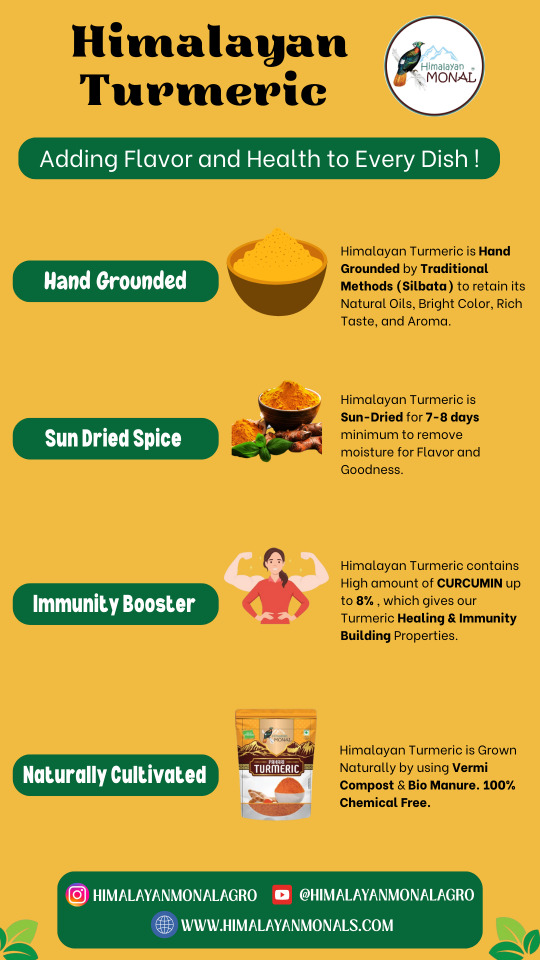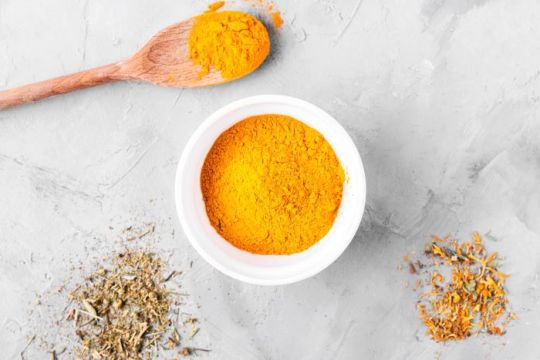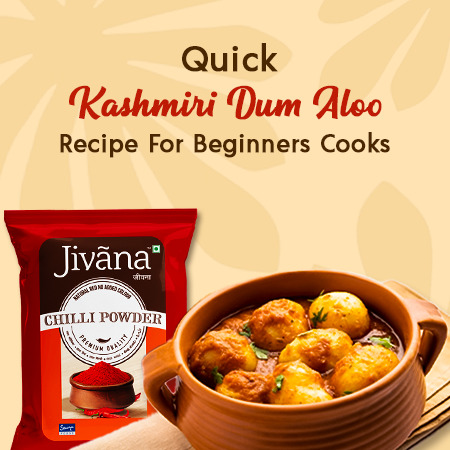#Pure Turmeric Powder
Explore tagged Tumblr posts
Text

#Organic Turmeric Powder#Pure Turmeric Powder#Turmeric Powder#Natural Organic Turmeric Powder#Turmeric Powder Exporter#Spice#Spice Turmeric Powder#Haldi Powder#Pure Haldi Powder#Exporter#India
0 notes
Text
Golden Spice: Everything You Need to Know About Natural Turmeric Powder
Pure organic turmeric powder is a spice every woman should have in her kitchen because of its enormous benefits for the body's overall health. Pure turmeric powder can brighten the skin naturally turmeric has soothing and calming properties which can help heal wounds faster. The rich antibacterial formula of pure turmeric powder fights the effects of allergy-causing germs.
It protects the skin from harmful toxins. Phytonutrients present in turmeric powder ensure that
the immune system functions harmoniously. Drinking hot water infused with turmeric can relieve the stomach from aching.

Why is Natural Turmeric powder called a golden spice? Its other names.
Natural Turmeric powder is called the golden spice because of its brilliant yellow color, which comes from the curcumin. It contains Turmeric is also known as “Indian saffron” because of its color and common usage. In Sanskrit, it's called “haridra”, which means “dear to Hari”. In Hindi, it's called haldi, in Tamil it's called “manjal”, and in Kannada it's called “arshina”.
Turmeric in Traditional Medicine
Turmeric has been used in Ayurvedic and Traditional Chinese Medicine (TCM) for thousands of years. It was traditionally used to treat a wide range of ailments, from digestive issues to skin conditions and inflammatory diseases. In Ayurveda, it’s often used to balance the body's energies, cleanse the blood, and support overall vitality.
How to Incorporate Turmeric Into a Diet ?
Turmeric can make curries, soups, stews, rice dishes, roasted vegetables, smoothies, salad dressings, marinades, and even baked goods tastier because of its peppery earthy, musky essence. Turmeric can be incorporated into a diet by adding it to all of these recipes also it can be drunk with hot water or milk.
Face mask recipes of natural turmeric powder
Turmeric and curd face mask: Take a generous amount of turmeric chickpea flour curd and honey in a bowl and mix it thoroughly with a spoon till no lumps are left in this mixture. This face pack reduces acne marks, gives a glow, and even-toned skin.
Turmeric and aloe vera face mask: Aloe vera nourishes the skin from within and makes the skin soft, smooth, and subtle combined with the richness of turmeric it can remove all signs of blemishes and dark spots.
Lemon honey and Turmeric: Honey and lemon can reverse the effects of tan and hyperpigmentation combining all of these three ingredients together can reduce inflammation and retain hydration of the skin.
Apply any of these face packs, let them dry, and then rinse them off with cold water to see the best results.
How ancient is turmeric powder? It was produced in which countries?
The use of pure turmeric powder dates back over 4,000 years from now to the Vedic culture in India. It was used as a culinary spice, for medicinal purposes, and in religious ceremonies. India, China, Myanmar, Nigeria, Bangladesh, are some countries where pure turmeric powder was produced and is still being produced.
Conclusion
Turmeric, the Golden Spice, is a powerful, natural addition to a diet and wellness routine. With its wealth of health benefits, versatility in cooking, and role in traditional medicine, turmeric offers a golden opportunity to enhance both your health and your meals. Whether you sprinkle it on your curry or enjoy a soothing turmeric latte, this spice has earned its place as a true superfood. Embrace the Golden Spice and experience the many ways it can benefit your body, mind, and soul. By incorporating natural turmeric powder into a diet and lifestyle, unlock its full potential and enjoy the remarkable health benefits it has to offer.
0 notes
Text
Selecting the Best Pure Turmeric Powder: A Comprehensive Guide
Turmeric is a golden-yellow spice used for enhancing flavour, colour and nutrition to your food. There are several health benefits of turmeric powder as it boosts your immunity, improves your brain function and kidney health, control cholesterol and anxiety. Some studies suggest that it is also used for cancer treatment (pancreatic cancer, prostate cancer and multiple myeloma). Ancient people have been using turmeric for ages as it has several medicinal uses.

Choosing the right quality of turmeric powder is very important these days as a lot of adulterated qualities are available in the market. Irrespective of your uses, it is important that you choose the right pure turmeric powder. Below are some useful guidelines that will help you to choose the right quality of pure turmeric powder.
It is very important to analyse the source of raw materials when it comes to pure turmeric powder procurement. Go for brands who source their raw materials from well-known farms and follow organic practices.
Certifications does play a major role in understanding the quality of turmeric powder. Look for organic certified brands as they ensure that the turmeric powder you are buying is free from chemicals and pesticides. Check the packaging of the band if they have USDA organic, EU Organic or India organic logo.
Identification of pure turmeric powder can be determined by checking the colour and aroma. Pure turmeric powder is golden yellow colour and has a unique earthy aroma whereas inferior quality turmeric powder looks dull and have a mouldy aroma.
Pure turmeric powder can be determined by testing the presence of chemicals present in it. Mix one tablespoon of turmeric powder in a glass of water and dissolve it. If the waters turns pale yellow and the powder settles at the bottom, it is the right quality but if the water turns dark yellow then it is an adulterated quality.
Pure turmeric powder can also be identified by the curcumin percentage which is an active compound present in it. Curcumin in the main compound present in turmeric which has numerous health benefits. Look for the curcumin content embedded on the labels as high content indicates higher quality.
Cross check the packaging of the turmeric powder if it is properly sealed to ensure its freshness and reliability.
Before purchasing your turmeric powder give some time to read the reviews from other customers as their experiences can provide you valuable insights about the effectiveness and quality of the product.
Although price is not the sole factor albeit excessively cheap turmeric powder may be indicative of low quality. You should invest in a product that offers value for money and meets your required quality standards.
If you follow the above tips then you can confidently choose the right and pure turmeric powder that would suffice your requirements.
Although there are several organic turmeric powder manufacturers in India, Veerral Agro Tech/Kisan Agro leads the industry and convers all your needs. Every batch of organic turmeric powder supplied by Veerral Agro Tech/Kisan Agro is carefully manufactured and passes a stringent quality check to ensure highest level of customer satisfaction.
We not just provide you the quality of top notch but also ensure that the prices you get is highly competitive in the market. Seeking for a reliable organic turmeric powder manufacturers in India, visit us at www.viralspices.com and get your needs covered.
#Turmeric Fingers and Powder#Pure Turmeric Powder#how to choose pure turmeric powder#tips to choose pure turmeric powder
0 notes
Text
Quick Rajasthani Dal Tadka Recipe for Everyday Meal

Not many foods are there in this large, culinary world of Indian cuisine that have the simple, comforting appeal of a well-made Tadka Dal. It is and has been the favourite of every family in Rajasthan due to its taste and creamy touch with aromatic spices. We bring the same restaurant-quality Dal right into your homes, further enhanced by the magical power of Jivana Turmeric Powder.
The Magic of Jivana Turmeric
Jivana Turmeric Powder: High curcumin content, pure, and farm fresh. One of the key ingredients that promote an overall healthy lifestyle is curcumin. Our haldi powder comes in the strength of 3X and improves absorption.
Benefits: Strong Antioxidant & Anti-Inflammatory Properties, May Aid in Diabetes Prevention & Heart Health Protection from Cancer, Relief from Arthritis, has Antimicrobial and Anti-Bacterial Properties, Improved Liver Function and Digestion, and is Chemical-Free. Choose Jivana Turmeric Powder for your health!
Rajasthani Tadka Dal Recipe
Let's start our cooking now and turn it into a memorable dining experience at your place. Here's how to make Rajasthani Tadka Dal with Jivana Turmeric Powder:
Check the Full Recipe Here:- Rajasthani Dal Tadka Recipe
#pure Haldi online#Buy Haldi online#chemical free haldi#buy turmeric online#chemical free turmeric#buy red chilli powder online#chilli powder#buy chilli powder online#red chilli powder#buy coriander powder online#coriander powder#buy dhaniya powder online#dhaniya powder online#Buy dhania powder online#chemical free sea salt
0 notes
Text

Himalayan Turmeric (Haldi) is a Powerful Natural Curcuma Spice powder that is present in every Indian kitchen. Its botanical name or scientific name is Curcuma longa. Himalayan Turmeric Powder is Pure, Hand Grounded by Pahari Women Farmers, full of Natural Color and Aroma.
Haldi benefits include - Boosting Immunity, Healing Wounds, Helps in Digestion and Keep Skin Glowing. Just a pinch of haldi in warm milk or daily cooking adds strength to your body.
You can use it in curries, teas, or in face packs. Himalayan Pahari Haldi is not just a spice but wellness from the hills made with love and tradition.
Visit Through - WWW.HIMALAYANMONALS.COM
#healthy turmeric#pure turmeric#healthy diet#fitness#best for body#healthy eating#good for body#natural diet#organic#haldi powder
0 notes
Text

#Pure Organic Turmeric Powder#Turmeric Powder#Organic Turmeric Powder#Pure Organic Turmeric Powder Exporter#Pure Organic Turmeric Powder Supplier#Turmeric Powder Supplier#Exporter#India
0 notes
Text

#Natural Turmeric Powder#Pure Turmeric Powder Exporter#Turmeric Powder#Organic Turmeric Powder#Pure Natural Turmeric Powder#Turmeric Powder Supplier#Turmeric Supplier#Exporter#India
0 notes
Text
TURMERIC POWDER
Turmeric powder, which is usually called the ‘golden spice,’ has been widely used in kitchens and families throughout the centuries. But it may surprise you to learn that this astounding spice goes far beyond just the beautiful bright yellow colour and the pungent taste. Also, no one ever thought that turmeric powder was so versatile, whether used in a recipe for a delicious curry or for the skin when you have a pimple that just won’t go away. Well, let’s explore the bright side of turmeric powder and find out how you can utilize this universal spice in 10 mind-blowing ways. And at the end of this journey, you will appreciate why Chef Spices Turmeric Powder is the best when it comes to turmeric miracles.
#TURMERIC POWDER#indian spices#food#cooking#health & fitness#healthy eating#nutrition#pure organic turmeric powder#organic turmeric powder#turmeric powder supplier
0 notes
Text
Experience the vibrant color and potent health benefits of Organic Turmeric Powder. Sourced from premium, organic turmeric roots, this powder is finely ground to preserve its natural aroma and rich flavor. Perfect for culinary use, herbal teas, or DIY beauty products, our organic turmeric powder offers an authentic taste of nature with every scoop.
1 note
·
View note
Text

#Organic Turmeric Powder#Pure Turmeric Powder Exporter#Turmeric Powder#Pure Organic Turmeric Powder#Turmeric Powder Supplier#Turmeric Supplier#Exporter#India
0 notes
Text
0 notes
Text
#Organic Turmeric Powder#Pure Turmeric Powder#Turmeric Powder#Natural Organic Turmeric Powder#Turmeric Powder Exporter#Spice#Spice Turmeric Powder#Haldi Powder#Pure Haldi Powder#Exporter#India
0 notes
Text
Beyond the Golden Hue: Exploring the Versatility of Organic Turmeric Powder
The culinary and medicinal properties of turmeric, with its brilliant golden hue, have long been appreciated. Organic turmeric powder is a multipurpose superfood rich in antioxidants and nutrients that have been used in everything from recent wellness movements to traditional Ayurvedic remedies. Together, we will explore the many applications and health advantages of this highly valued spice, going beyond its golden exterior.

1)The Essence of Purity: Harnessing the Power of Organic Turmeric Powder
Organic turmeric powder is highly valued for its potency and purity, as it is extracted from the Curcuma longa plant. In contrast to regular types, organic turmeric powder, also known as curcuma powder, is grown without the use of artificial fertilizers or pesticides, guaranteeing that you will get the full health benefits of this age-old spice without being exposed to hazardous chemical additives.
2)A Culinary Delight: Elevating Dishes with Pure Turmeric Powder
In addition to its therapeutic qualities, organic turmeric powder enhances the taste and complexity of a broad range of food preparations. Turmeric adds a subtle earthy aroma and a distinctive golden hue to dishes and drinks. It can be added to soups, curries, and lattes. Its adaptable character allows for countless culinary experiments, tantalizing the senses and bringing dishes to life with its distinct flair.
3)The Golden Spice of Wellness: Unleashing the Healing Potential of Turmeric
Turmeric's active ingredient, curcumin, has been recognized for centuries for its therapeutic benefits. Because of its strong anti-inflammatory and antioxidant qualities, organic turmeric powder is a useful ally in enhancing general health and well-being. Turmeric offers a complete approach to wellness with its medicinal benefits that go well beyond its culinary appeal. These benefits range from reducing joint pain and inflammation to promoting immunity and digestive health.
4)Beauty Unveiled: Turmeric Powder as a Natural Skincare Remedy
In addition to its internal benefits, organic turmeric powder serves as a cherished beauty secret for radiant skin. Its anti-inflammatory and antimicrobial properties make it a potent ingredient in homemade face masks and skincare formulations. From brightening dull complexion to combating acne and reducing signs of aging, turmeric's skin-loving properties make it a staple in natural beauty rituals, leaving skin glowing with vitality and shine.
5)Embracing Curcuma: Exploring the Diversity of Turmeric's Uses
Beyond its traditional culinary and medicinal applications, organic turmeric powder finds its way into an array of lifestyle products and wellness rituals. From turmeric-infused teas and supplements to natural dyes and textile treatments, turmeric's versatility knows no bounds. Whether incorporated into daily rituals or cherished as a symbol of cultural heritage, turmeric transcends boundaries, weaving its golden thread into the fabric of diverse traditions and lifestyles.
In conclusion,
pure turmeric powder goes beyond its golden hue, offering a multifaceted tapestry of culinary, medicinal, and beauty benefits. From enhancing flavors to promoting wellness and radiance, turmeric's versatility makes it a cherished companion in healthy living. Embrace the richness of organic turmeric powder and unlock its transformative power to nourish body and mind.
0 notes
Text
HOW TO CHOOSE THE RIGHT PURE TURMERIC POWDER?
#Turmeric Fingers and Powder#Pure Turmeric Powder#how to choose pure turmeric powder#tips to choose pure turmeric powder
0 notes
Text
Quick Kashmiri Dum Aloo Recipe For Beginner Cooks

Kashmiri Dum Aloo is a dish that has delighted taste buds for centuries. This iconic recipe hails from the beautiful valley of Kashmir and holds a special place in the hearts of food lovers around the world. At Jivana Store, we are passionate about preserving and celebrating traditional recipes, especially those that highlight the use of pure, chemical-free, natural, and organic ingredients. Let’s explore the rich history and cultural significance of Kashmiri Dum Aloo, a dish that is as storied as it is delicious.
Check the Full Recipe Here:- Kashmiri Dum Aloo Recipe
#buy red chilli powder online#chilli powder#buy chilli powder online#red chilli powder#chemical free sea salt#buy turmeric online#chemical free turmeric#pure haldi online#buy haldi online#chemical free haldi
0 notes